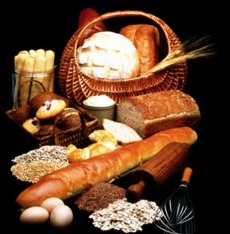
Project looks at improving gluten-free
By Food in Canada staff
Food Trends Research & Development Health & Wellness Gluten-free gluten-free products
Researchers who are part of the Healthgrain project of the EU have been studying a wide range of gluten-free cereals and their impact on product quality.

The researchers say that due to the unique properties of gluten, it’s a challenge for food scientists to produce good quality gluten-free products.
Healthgrain says the majority of products currently on the market are in “in general of very poor quality.”
Healthgrain’s focus
So the Healthgrain project focused on developing nutritious and tasty gluten-free breads.
The project looked at a detailed characterization of gluten-free cereals and assessed these cereals as potential ingredients for gluten-free breads.
The characterizations ranged from a detailed chemical characterization to rheological evaluation of the resulting doughs, structural properties of the doughs and breads using advanced microscopic methods, as well as pilotscale baking trials and sensory evaluation.
Improving gluten-free
The project also covered novel methods to improve the quality of gluten-free cereal products.
One example was using specially selected Lactic acid bacteria with properties such as antifungal activity, exopolysaccharide production and enzyme production.
The use of specifically selected Lactic acid bacteria can significantly improve the quality and shelf life of gluten-free breads.
Challenges
One of the major challenges associated with gluten-free products is their texture.
So part of the project investigated the influence of a range of enzymes such as transglutaminase, glucose
oxidase and protease on a wide range of gluten-free cereals.
What they found was that enzymes can play an important role in improving the structure of gluten-free bread, but the enzymes showed different
interactions with the various gluten-free flours.
Processing methods
Novel processing such as high-pressure processing (HP) was also introduced as a means to create ingredients for gluten-free cereal products.
The researchers also investigated the impact of HP on the major polymers found in gluten-free flours, such as starch and protein.
The results revealed that starch gelatinization and protein network formation at pressures ≥ 350 MPa was obtained while a weakening of protein structures was observed at lower pressures.
Adding HP-treated gluten-free batters to bread resulted in improved volume and decreased staling at 200 MPa, while higher pressures did not improve oat bread quality.
About Healthgrain
Healthgrain’s vision is that grain-based foods assist consumers in health maintenance worldwide, help reduce health care costs and provide added value for companies in the production chain.
The project aims to promote science-based concepts to unlock the health promoting potential in the entire grain food production chain to obtain healthy, convenient and appealing foods.
Print this page